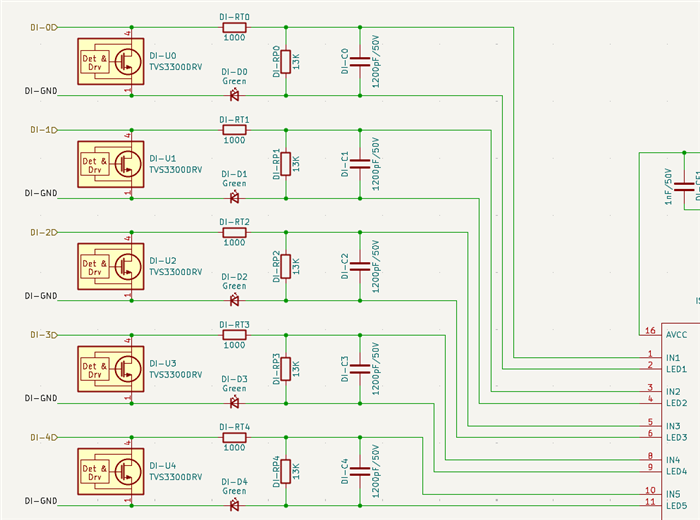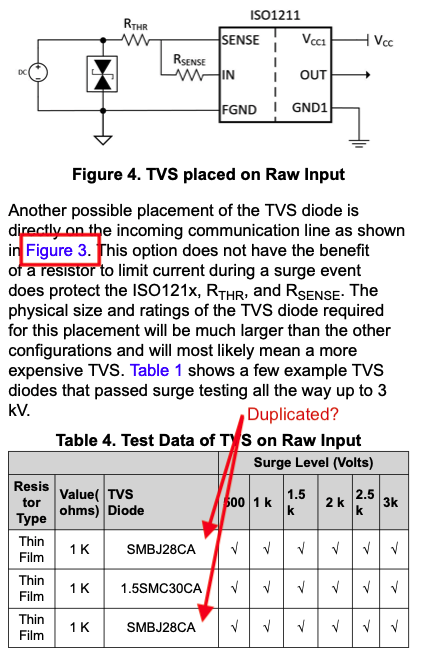Other Parts Discussed in Thread: ISO1211, TVS3300, ISO1212, TVS3301, TVS2700
Tool/software:
Hi everyone,
I'm implementing the ISO1228 in Sink Mode and Type 1 configuration using the default resistor values indicated on its data-sheet. The sensors connected to it operate at 24 VDC.
While I’m not required to meet any regulated standards, I would like to implement as much ESD and surge protection as is practically possible. I’d appreciate your help in reviewing my reasoning and confirming whether my conclusions are sound.
For reference, I’m looking at IEC 61000-4-5, and basing my observations on this Application Brief from TI, which discusses the ISO1211 rather than the ISO1228. (The ISO1211 tolerates up to 60 V on its inputs, whereas the ISO1228 handles up to 38.5 V, according to their datasheets.)
I'm using 1 kΩ MELF resistors. Based on the findings in the brief and presented on its Table 1, this configuration can tolerate surge levels up to 2.5 kV. Is it reasonable to extrapolate this result to the ISO1228?
Now please consider this schematic for my use case:

As shown in the schematic above, I considered adding a unidirectional TVS3300 on each input line instead of using the diodes listed in Table 4 of the brief. However, the TVS3300 has a clamping voltage of 40 V—just slightly higher than what the ISO1228 can tolerate. More importantly, it seems the surge protection offered by the TVS3300 would not exceed the protection of 2.5kV surge already provided by the 1 kΩ resistor.
Given that, does it make sense to include the TVS3300 (unless there’s another benefit I’m missing)? And if not, would it be better to choose one of the diodes listed in Table 4 instead? Am I understanding this correctly?

(Also, it seems there might be a couple typos in the brief I have indicated in red in the image above)
One last question: assuming the TVS3300 is suitable for the input lines, could this type of TVS also be used on the AVCC line of the ISO1228? Since the same power source is used by the connected sensors, I expect any ESD or surge from them could propagate to AVCC.
I appreciate any help on this.
Thank you!


